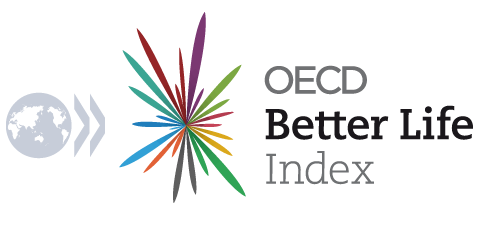Economy of wellbeing: Having it all?
By Sue Kendall-Bilicki
Are economics and wellbeing as unlikely a pair as a fish on a bicycle, or are they as inseparable as Brangelina? How can we ensure that economic growth delivers what people need? These are hardly new questions, but they are attracting renewed attention as many economies struggle to recover from crisis and record numbers of young people are unable to find jobs against a background of rising inequality in many countries.
The idea that purely economic measures such as gross domestic product (GDP) do not show whether people are feeling happy and living well has been around for more than a decade, culminating in the How’s Life Initiative and its Better Life Index which enables people to see how their life compares in terms of which of 11 factors are important to them. Of course they include how much you earn and how much money you have, but they also look at whether you have adequate housing, feel safe, have friends you can rely on or clean water to drink.
Obviously we still very much need to know how our economies are doing in GDP terms – but we also need to know if that GDP is delivering better lives for individuals. The OECD has been measuring and reviewing countries’ economic performance for more than half a century, but in recent years has also started developing ways to measure how people and societies are doing in terms of individual wellbeing. So what happens when you put it all together? Wellbeing issues are included in the latest OECD look at what drives growth in general, and now for the first time the OECD has added to the classic GDP measures in a survey of an individual country to look “beyond GDP” and into the main dimensions of well-being; those aspects of life that really matter for people, using the How’s Life 11 dimensions.
So, what new insights does the latest report on the Austrian economy give us? For one thing, the relationship is definitely Brangelina rather than fish on a bicycle. The headline economic numbers show that Austria has enjoyed a remarkable performance, even during the crisis, keeping unemployment low and GDP growing, while the wellbeing indicators show that in Austria that economic growth has gone hand in hand with social progress. A steady rise in GDP per head has been accompanied by higher quality of life: more leisure time, stronger environmental standards, longer life expectancy, and more integrated, well-functioning social support networks.
There are also of course challenges, such as how increased wellbeing is shared across society. Single parents and immigrants, for example, have not benefited as much as other groups in society from improvements in wellbeing.
Of course GDP remains the tried and tested headline measure of a country’s economic growth, but we also need to know that growth is translating into individual wellbeing. And the two are not mutually exclusive. As Norwegian Prime Minister Jens Stoltenberg told the OECD Forum in Paris in May “It used to be…the standard view that countries had to choose between economic growth and equality…. the Nordic experience is the opposite….gender equality, universal education, and healthcare contribute to equality and at the same time to economic growth.”
Find out more:
OECD Economic Surveys www.oecd.org/economy
Going for Growth 2013 www.oecd.org/eco/growth/going-for-growth-2013.htm


Comments